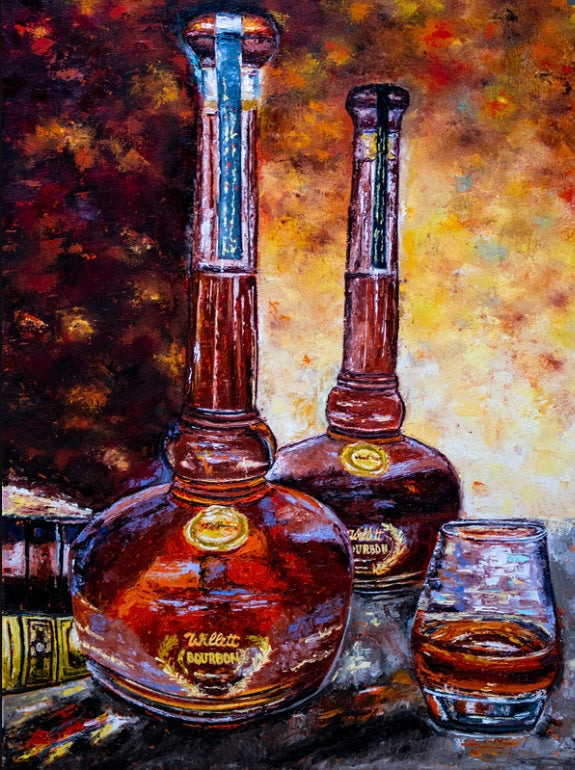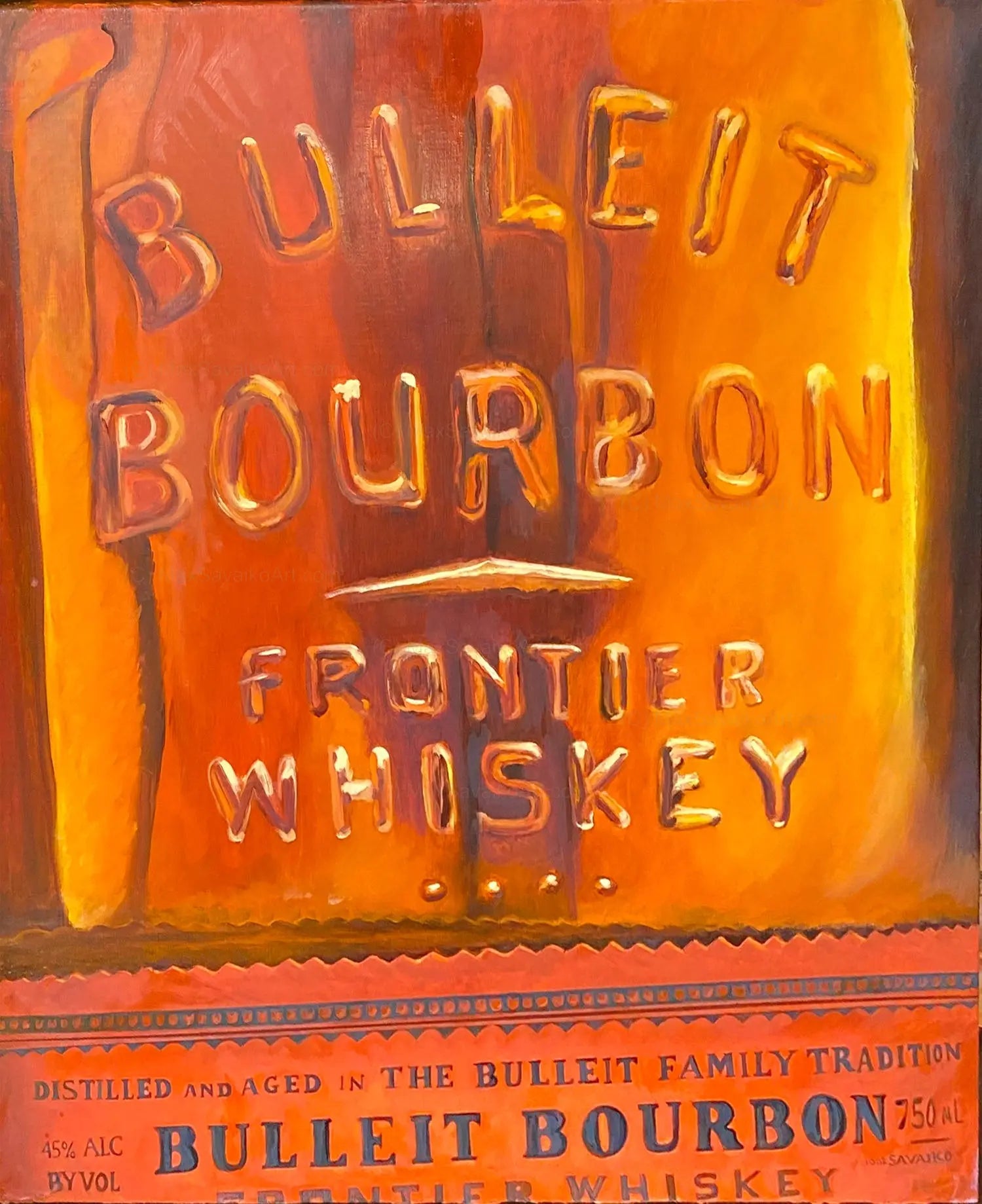Introducing the Appeal of Bourbon Art: A Tribute to Craft Distillers
Introducing the Appeal of Bourbon Art: A Tribute to Craft Distillers
Blog Article
The Significance of Whiskey Art in Celebrating Heritage and Workmanship in the Beverage Industry
The elaborate connection in between scotch art and the event of heritage and craftsmanship within the drink sector can not be overstated. Via thoughtfully created tags and bottles, whiskey brand names encapsulate their historic origins and the artisanal skills that define their production methods. This imaginative measurement not only enhances market allure but additionally acts as an avenue for social storytelling, fostering a deeper connection in between the customer and the craft. As we check out the numerous aspects of this subject, intriguing questions concerning the effect of modern-day trends on conventional methods emerge, prompting further exam.
The Historic Roots of Whiskey
At the heart of bourbon's allure exists a rich tapestry of historical roots that trace back to old human beings. The beginnings of bourbon can be linked to the distillation practices of the Sumerians and Babylonians around 2000 BCE, where early kinds of fermented grain beverages began to arise. It was in the Center Ages that the art of distillation progressed considerably, specifically in Ireland and Scotland, leading to the development of scotch as we understand it today.
The term "scotch" itself originates from the Gaelic word "uisce beatha," implying "water of life." This phrase underscores the cultural relevance of scotch in Celtic cultures, where it was often connected with rituals, events, and common bonding. By the 15th century, distillation came to be a recognized craft within monastic neighborhoods, leading the means for the establishment of lawful distilleries.
As profession paths broadened, scotch's appeal grew, going beyond local limits and recording the passion of aficionados worldwide. Bourbon Art. This historic journey reflects not only the craftsmanship behind bourbon production however additionally its integral function in social and cultural contexts, marking it as a substantial beverage throughout history
Artistic Expression in Branding
Bourbon branding stands as a compelling crossway of virtuosity and commerce, where visual identity plays a crucial duty in shaping consumer perception. The aesthetic appeals of whiskey tags, packaging, and marketing materials mirror not just the brand's story yet also its core values and heritage. Through imaginative expression, distilleries communicate a narrative that resonates with consumers, stimulating emotions and triggering links.
The usage of color, typography, and imagery in branding offers to set apart items in a saturated market. As an example, typical themes may evoke a feeling of credibility and workmanship, while modern layouts can symbolize development and forward-thinking. This tactical artistic direction improves brand recognition and loyalty, enabling customers to forge an individual relationship with the scotch they choose.
Moreover, imaginative expression in branding typically acts as a party of regional heritage. Distilleries regularly integrate regional icons or historic referrals right into their designs, producing a sense of place that welcomes customers to take part in a broader social experience. Ultimately, the artistry behind scotch branding not just boosts aesthetic appeal yet also enriches the total story of the brand, promoting a deeper recognition for the craftsmanship and heritage embedded in each bottle.
Craftsmanship in Container Layout
The creativity obvious in whiskey branding prolongs beyond visual identification to encompass the craftsmanship entailed in bottle layout. Each container works as a vessel not simply for the spirit within, site here yet likewise for the tale it informs concerning its custom, origin, and quality. The layout procedure needs precise attention to detail, as components such as closure, material, and form contribute dramatically to the overall understanding of the bourbon.
Craftsmanship in container style entails selecting high-quality glass that can improve the bourbon's color and clearness, while also giving a tactile experience for the customer. The shape of the container should be both useful and aesthetically appealing, often showing the heritage of the brand. Many distilleries choose special shapes or embossed logo designs that stimulate a sense of authenticity and history.
Furthermore, the label design and typography play an important function in connecting the brand name's narrative. Limited Edition. A well-crafted container not just captivates the customer's eye however likewise reinforces the brand's commitment to high quality and tradition. By doing this, the craftsmanship of container layout comes to be an essential aspect of the scotch experience, merging creativity with an extensive regard for heritage
Social Importance of Bourbon Art
Celebrating tradition and craftsmanship, the social value of scotch art transcends mere appearances, linking with the historic and social stories of the areas from which it comes from. Each bottle functions as click here now a canvas, depicting the distinct stories, folklore, and traditions that have actually formed neighborhood whiskey-making methods. The complex styles typically reflect the heritage of the distillers, including icons and motifs that reverberate with the culture and values of their areas.

Furthermore, scotch art plays a crucial function in communal events and parties, functioning as a substantial link in between individuals and their shared experiences. By valuing the creativity in scotch packaging, consumers grow a much deeper understanding and respect for the craft, eventually enriching their pleasure of the beverage itself.
Modern Trends in Whiskey Discussion
Over the last few years, the discussion of scotch has actually advanced to show modern tastes and fads while still honoring traditional craftsmanship - Limited Edition. Distilleries are progressively concentrating on aesthetic components that enhance the general drinking experience, connecting the void between heritage and modernity
Cutting-edge container styles a fantastic read have emerged, typically incorporating sustainable products and imaginative labels that tell compelling stories. Several brand names now collaborate with neighborhood artists, infusing their items with unique aesthetic expressions that resonate with consumers. Additionally, limited-edition releases are typically packaged in collectible containers, including value and appeal for aficionados.

Verdict
In final thought, scotch art offers as a crucial channel for sharing the heritage and workmanship fundamental in the beverage industry. With elaborate branding, cutting-edge container designs, and culturally substantial artistic elements, whiskey brands efficiently honor their practices and connect with customers.


Workmanship in container design includes selecting top quality glass that can improve the whiskey's shade and clearness, while also giving a responsive experience for the customer. In this way, the workmanship of container style ends up being an important facet of the scotch experience, merging artistry with an extensive respect for heritage.
In verdict, bourbon art serves as a crucial channel for sharing the heritage and craftsmanship fundamental in the beverage market.
Report this page